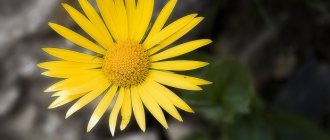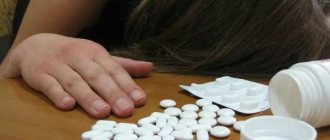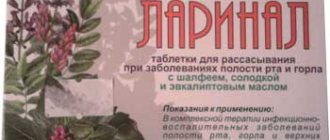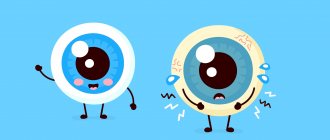The homeopathic medicine Arsenicum album is made on the basis of arsenic anhydride or, as it is often called, white arsenic oxide.
This remedy belongs to poisons that were quite popular among poisoners of all stripes due to their action: arsenic acted slowly and death from its use was very similar to natural.
As you know, the main principle of homeopathy is the treatment of like with like, that is, what can kill in small doses becomes a medicine. Therefore, Arsenicum album in homeopathic science is considered one of the most powerful remedies for treating many diseases . Initially, the drug was tested by the father of homeopathy himself - Hahnemann.
PHYSIOLOGICAL ACTION
Arsenic poisoning mainly affects the digestive and respiratory apparatus, skin, nervous system, liver and kidneys.
Digestive apparatus: there are always three signs - vomiting, diarrhea and pain.
Vomiting first ejects food, then the vomit becomes bilious and mucous. Tormented by burning thirst, patients drink greedily, but what they drink is almost immediately vomited back out, so they drink little by little, but often.
Diarrhea. Watery, colorless, containing a large number of white grains, similar to boiled rice, accompanied by burning pains and very painful cramps of all members. The similarity to cholera is so striking that there are errors in diagnosis. In subacute poisonings, gastric disorders with fever, noted by Hahnemann, were described in the poisonings of Heirosh, Havre and Lancero.
Respiratory apparatus: a feeling of pressure and shortness of breath are the predominant symptoms of subacute arsenic poisoning, but in chronic poisoning, disorders of the respiratory organs manifest themselves more sharply, since arsenic is released through all tissues covered by the epidermis and epithelium.
Laryngotracheitis is noted, causing hoarseness, bronchitis and very frequent runny noses, which can reach necrosis of the nasal bones in workers who inhale arsenic dust.
Leather. Imber-Gurbeir proved that all types of skin lesions can be caused by arsenic, but mainly the scaly and pustular forms. Brouardel, indeed, notes erythema, blisters, papules, pustules, ulcers, pityriasis-like peelings and cites a case of mildly expressed scaly psoriasis that appeared after drinking arsenic, which allows in some cases to determine the nature of the poisoning. Swelling is also one of the most persistent symptoms and usually affects the eyelids. Edema is a characteristic sign of cachexia among workers in arsenic mines.
Nervous system: patients are in a state of deep prostration, but without damage to mental abilities. There is insomnia, headaches, numbness in the arms and legs, and crawling. Borda noted burning and shooting pains in the soles and palms of arsenic beer poisoning.
The paralysis particularly affects the lower limbs, starting with the big toes, and is usually symmetrical.
The heart muscle is affected at the very beginning, which is why death occurs. The blood is greatly changed, in all cases there is pallor and cyanosis. There are various hemorrhages: petechiae, purpura, nosebleeds, bloody vomiting, etc.
The liver quickly increases in volume and undergoes fatty degeneration; the kidneys are also affected by real toxic nephritis with albuminuria, oliguria or anuria.
Reviews
Treatment with homeopathy does not always give the desired positive results. However, reviews of the drug Album Arsenicum are mostly positive. Many patients note an exacerbation of the disease at the first stage of use, then a rapid improvement in the condition.
Tatyana, 49 years old: “Since the age of 40, I suffered from bronchial asthma due to allergies. I was treated first with simple inhalers, then I was prescribed treatment with hormone-based drugs, but soon they stopped giving positive results. I turned to a homeopath, who prescribed me several different remedies, among which was Arsenicum, and urged me to completely abandon hormonal therapy. At first it was very difficult for me and I used an inhaler from time to time. Then the disease began to recede and the attacks gradually stopped. It’s already been my sixth month without using medications. Let's see what happens next."
Nina, 28 years old: “At first I suffered for a long time with gastritis, then it quickly and imperceptibly turned into an ulcer. I refused the resection, but went on a strict diet and turned to a homeopath. He prescribed me several medications, among which was Album Arsenicum, and also recommended drinking herbal infusions. I have been taking the prescribed medications for the second month now and I feel noticeable relief, I even allow myself to relax in my diet. I hope that the disease can be cured completely.”
Mikhail, 40 years old: “I have been suffering from chronic bronchitis for five years now and constantly take some medications, which make me feel very bad. This interferes with leading a normal lifestyle, work and leisure. In search of an effective alternative remedy, I came across homeopathic Arsenicum. I don’t trust alternative medicine, but I decided to try the product and ordered it from the Internet. Indeed, already in the first week I began to feel much better. But you must follow the instructions."
TYPE
Pichet distinguishes three main arsenical types: first of all, this is the blossoming type, muscular, with shiny hair, thin skin, strong, strong build, but with one or even two disadvantages: he suffers from either asthma or lichen.
One step below is a person suffering from digestive disorders with a straw-yellow face, skinny, vomiting over every trifle, for whom the smell of the kitchen and even the sight of food is completely unbearable, who suffers from intense thirst, drinks a lot and often and immediately vomits everything, what I drank. The face is puffy, the eyes are surrounded by wide blue, as if he is wearing glasses, the lips are dry, cracked, with pityriasis-like peeling.
One more step, and we have cachexia: the skin is pale, the face of a seriously ill person with a “disfigured appearance”, with an “expression of agony”, extreme emaciation, somewhere in the body there is a tissue disorder; this is either cancer, or tuberculosis, or extremely acute cholera enteritis, or, finally, cachexia due to some chronic disease: malaria, nephritis, heart disease. Very often there is puffiness and swelling, more pronounced on the upper than on the lower eyelids.
Let's add a few touches to this picture: usually the patient Arsenicum album
afraid of the cold, he wraps himself up and huddles in a warm corner, and at the same time opens the window, because he needs fresh air.
Pharmacological effects
The drug Arsenicum album has an antimicrobial, antiseptic, antihistamine effect, and restores the energy component. The drug was primarily used as an antidote for intoxication of the body with poisons of plant and animal origin.
The medicine completely improves the functioning of the gastrointestinal tract, despite the nature of the dysfunction that has arisen.
Further clinical studies confirmed its effectiveness in the treatment of acute and chronic pathological processes of the cardiovascular, respiratory and excretory systems.
Deep penetration into tissues and organs ensures the dynamics of recovery for patients with renewed burning pain, alternating excitement and bitterness at night, worsening from cold, weakness after the slightest movement, acute thirst and fever.
The effect on the psyche is to eliminate anxiety, sleep disturbances and suffocation at night caused by dissatisfaction, suspiciousness, pedantry, and inadequate assessment of events. Patients of the Arsenicum album type are people with delusions of grandeur, leadership ambitions, who consider themselves to be aristocrats and react painfully if they do not find confirmation of the image created in the imagination among others.
In the realities of life, they are capable of occupying leadership positions that require resistance to stress and responsibility for decision-making, but excessive pedantry, reaching the point of absurdity, causes mental illness, entailing physiological disorders at all levels.
Arsenicum album delivers a “double blow” by affecting the psyche and physiology, returning the patient to normal life. The drug serves as an antidote to existing or imagined negativity.
Read also: Garlic: medicinal properties and contraindications. Traditional recipes with garlic
CHARACTERISTIC
Hourly worse after midnight, between one and three in the morning.
Frequency of symptoms: every 2nd, 3rd, 4th, 15th day; every 6 weeks, every year. The longer the duration of the disease, the longer the period.
Sadness and excitement are always after midnight.
Excessive loss of strength, often not consistent with the disease that causes it: dizziness, runny nose, vomiting, etc.
Malignancy: Arsenicum album
for severe malignant fevers what
Aconite
for simple mild ones.
Sequence: asthma after the disappearance of eczema or measles rash, gastric disorders simulating a stomach ulcer, after suppressing the rash with some ointment. This is why arsenic corresponds so well with skin diseases.
Nature of the pain: burning, ameliorated by warmth.
Unusual thirst: the patient drinks often, but little by little. He especially prefers cold water, which causes aggravation and is relieved by heat. However, drinking cold water often “sits heavily on the stomach and then vomits.”
Nausea from the smell of cooked food or even just from the sight of it ( Colchicum
,
Sepia
).
Pain. The main characteristic is burning, ameliorated by heat. They are often compared to pain from a prick with a hot needle or from hot coals. It should be noted that cold lotions can relieve them for a short time, but then bitterness sets in. They are often accompanied by swelling, sadness, agitation and despair.
The stool is dysenteric or cholera-like in nature. It is extremely fetid, cadaverous, scanty, accompanied by a strong burning sensation in the rectum. Worse at night, after eating and drinking, accompanied by severe prostration.
Menses too heavy, premature, with dark blood. The discharge is always corrosive, accompanied by itching.
Leucorrhoea: acrid, burning, irritating.
Menstruation may be absent and replaced by discharge with a cadaverous odor (with cancer).
Instructions for use
Low dilution drugs (C3, C6 or C9) are used in the acute stage of the disease. Mostly they affect the problem only indirectly, but they ease the patient’s well-being within the first 5-10 minutes after administration.
The average dilution - C12 or C15 - is effective if the symptoms absolutely coincide with the indications for use.
High dilutions (C30 and above) are mainly used to treat chronic diseases. The effect of their use lasts from a week to a month, and can affect the emotional state of the patient.
Dosage for children:
It is recommended to start using Arsenicum album for medicinal purposes when the first symptoms of the disease appear, for example, C6 or C12 is taken for acute forms of the disease, and C30 for chronic ones.
For children, the following dosages are most often used:
- Under 2 years - 3 granules;
- Age 2-6 years - 5 granules;
- Over 6 years - 10 granules.
To make it more convenient to give this drug to small children, it is recommended to dissolve the required amount of granules in distilled, boiled or special water for baby food.
Dosage for adults
The drug granules are shaken in the bottle before use. They are taken sublingually (placed under the tongue). The recommended interval between taking medication and eating is 30 minutes before meals or 60 minutes after. For some patients, doctors prescribe diluting the required amount of grains in boiled water until completely dissolved and drinking in several doses.
Typically, the adult dosage looks like this:
- Low dilutions - 10 grains 2-3 times a day;
- Medium dilutions - 10 grains 1-2 times a day;
- High dilutions - 10 grains once a month or week.
These dosages are effective in case of complaints of exacerbation of certain chronic diseases.
If the dosage is chosen correctly, the patient feels the effect after just 1 dose.
When using this homeopathic remedy, it is recommended to strictly limit the use of various skin creams and ointments, and exclude hormonal ones.
We strongly recommend that you do not self-medicate or use this or any other medicine without consulting a doctor - this may cause irreparable harm to your health.
MAIN INDICATIONS
DIGESTIVE TRACT: acute gastroenteritis ( Arsenicum album
causes it to a strong degree) with burning pain, intense thirst; the stomach is so irritated that the slightest amount of food or drink causes pain or immediately causes vomiting, diarrhea, or both. Cold drinks, water and ice cream cause or increase this suffering.
STOMACH PAIN in those suffering from lichen.
SEVERE FORMS OF DYSENTERY in the initial period of the disease. EXTERNAL HAEMORROIDAL CONES are burning, ameliorated by warmth.
RESPIRATORY TRACT: Asthma is the main remedy. Especially useful for those suffering from lichen after the rash disappears. Foamy, egg-white-like sputum is a special indication (Jousset). Add to this the severity of symptoms and anxiety during the night and a burning sensation in the chest.
Runny nose is watery, with slight discharge, corrosive, with a burning sensation in the upper lip.
PLEURITIS: Arsenicum album
especially indicated for those prone to fainting.
To resolve the effusion, it should be alternated with Cantharis
.
PNEUMONIA with high fever, great prostration and restlessness at night.
For diseases of the respiratory organs requiring the use of Arsenicum album
, acute, sometimes burning pain is often noted in the upper third of the right lung at the level of the 3rd intercostal space.
URINARY TRACT: Bright's disease. It is probably the best remedy for chronic Bright's disease, and Hughes prefers it for scarlet fever nephritis. Siffert attributes it in all periods of albuminuria to 5 drops of the 6th dilution 3 times a day. The main clinical picture is as follows: general dropsy, edema and puffiness, protein urine, pale waxy skin, debilitating diarrhea, burning sensation and thirst.
LEATHER. Arsenicum album
indicated for all kinds of rashes if they are accompanied by itching and burning, soothed by heat, but especially:
ULCERS with a burning sensation, as if on fire, with a bluish bottom, black or greasy, bleeding easily, with a fetid discharge.
GANGRENE and especially dry senile gangrene, with sharp sensitivity and burning in the affected parts; relief from warm and hot compresses ( Secale
- relief from cold compresses).
Anthrax, burning like fire.
Ringworm, worse cold.
ECZEMA - worse in winter, better in summer, like Psorinum
.
ARBITRARY HEMORRHAGES, purpura, in severe diseases.
INFECTIONS. CHOLERA. Charger points out the following symptoms: severe melancholy with fear of death, extreme excitement, forcing the patient to constantly move, get out of bed, and open up; burning in the pit of the stomach as if from hot coals.
Typhoid fever: severe cases with extreme loss of strength, with abnormal debilitating fever, and bloating is often noted.
CIRCULATORY SYSTEM. Arsenicum album
, just like
Plumbum
is one of the best remedies for aortitis.
NERVOUS SYSTEM. HEADACHE. Migraine with severe pain, especially over the left eye. The pain is burning, worse on the left, periodically, especially after midnight. Nocturnal neuralgia always makes one think of Arsenicum album
.
According to Buchner: moving neuralgia, appearing at night - Arsenicum album
;
morning and afternoon - Ignatia
;
old - Silicea
.
FEVER. Seizures are rarely complete; tend to appear at night. Chills are never accompanied by thirst, but it appears with heat of a burning nature. Sweat profuse, cold and sticky. The periodicity and loss of strength are clearly pronounced.
OTHER DRUGS THAT CAUSE BURNING PAIN: Phosphor
- pain less intense than with
Arsenicum album
, more limited: between the shoulder blades, along the spine and in the palms, worsened by heat.
SULPHUR
: pain is widespread, as with
Arsenicum album
, but less acute, observed especially in chronic diseases. Never improves from heat.
ANTHRACINUM
has the same burning pains as
Phosphorus
, but they appear in the area of the boil or carbuncle and are accompanied by a blackish scab or sanguineous discharge.
APIS
burns and pricks “as if with red-hot needles”; worse from warm compresses, better from cold.
SECALE
: the burning is the same as in
Arsenicum album
, but the affected parts are cold to the touch and, however, the patient cannot tolerate the slightest heat, wants to open up and can only calm down from cold compresses.
Compatibility and antidotes
There is a close connection between homeopathic medicines, having studied them, you can choose an antidote or, on the contrary, remedies that enhance each other’s effects.
Homeopathic medicines, like any medicine, are prone to interact with each other, changing and, at the same time, adjusting their pharmacological properties. Depending on the outcome of such interaction, Arsenicum album may or may not be compatible with other homeopathic medicines.
For example, for intestinal disorders, Arsenicum album goes well with homeopathic remedies such as Nux vomica, Sulfur, China, Carbo vegetabilis.
A complement to Arsenicum album is Secale cornutum, both drugs work well together.
If during diphtheria there is a clear enlargement of the lymph nodes, then a joint dose with Arsenicum jodatum is prescribed.
For kidney pathologies, the effect of Arsenicum album is similar to the effect of Apis and Phosphorus.
Antidotes for Arsenicum albumum
In homeopathy, there are remedies that can neutralize the effect of the drug, so-called antidotes. Sometimes antidotes can act mutually, i.e., antidotal drugs nullify the effect of Arsenicum album, and Arsenicum album itself is an antidote to these drugs :
Such mutual antidotes include:
- Hina (China);
- Hepar sulphuris;
- Nux vomica;
- Iodine (Iodum);
- Sambucus;
- Veratrum album;
- Ipecacuana.
Also neutralize the effect of Arsenicum album:
- Camphor (Camphora);
- Tabacum.
Drugs for which Arsenicum album is an antidote:
- Ferrum;
- Phosphorus (Phosphorus);
- Mercurius;
- Carbo vegetabilis.
DOSES
Arsenicum album
It works in all doses, but, however, in certain cases, some are preferably used.
Low dilutions (hundredths) are more often used for nephritis, cholera, ascites, runny nose, asthma, heart and aortic diseases, and scrofulous ophthalmia.
Medium dilutions (6 and 12) are often preferred for febrile processes, pleurisy, and to begin treatment of diseases that require strong doses during the period of cachexia. High dilutions should be prescribed for intermittent fevers and neuralgia.
Psychotype of the patient
The Arsenicum album patient is aristocratic. He is rational, calculating, and strives for total control over everything. Mostly, such people are pedantic, demanding of themselves and their environment in everything.
A distinctive feature of Arsenicum patients is excessive concern for their health, they experience an obsessive fear of death, which intensifies in the evening or at night. He has wonderful intuition and is a real perfectionist, but he often has problems with social adaptation.
Such people are very melancholic, sensitive to the words and actions of others, often tearful and depressed, cowardly and restless.
Side effects
Arsenicum album (homeopathy), the indications for the use of which must be clarified with the treating specialist, is well tolerated and does not cause addiction.
To date, several cases of side effects have been reported. In this case, the development of allergic reactions and manifestations characteristic of arsenic poisoning is noted - nausea, vomiting, diarrhea syndrome.
If side effects develop, you should consult your homeopath.
What is Arsenicum album?
In fact, arsenic oxide and arsenic anhydride are not synonymous names, but one substance from which the described drug is made. At one time, arsenic was an extremely popular drug among poisoners. The effect of the poison was extremely slow, as a result the death of a person seemed completely natural, and the criminal was beyond suspicion.
The principles of homeopathic treatment come down to knocking out a “wedge with a wedge” - that is, the use of life-threatening drugs in such insignificant doses that as a result of their use they become a medicine and have a beneficial effect on various pathological conditions. It was this theory that the “pioneer” of homeopathy, Hahnemann, adhered to; perhaps it was on this basis that he became one of the first to test arsenic in small dosages on himself.
In what form is it produced?
Arsenicum album (homeopathy), the indications for the use of which must first be studied in the instructions or checked with a homeopathy specialist, is available in the form of granules or oral drops. Moreover, both dosage forms can have different degrees of concentration.
Granules: C3-C10000, LM.
Drops (solution): C3-C10000, LM.
The active component has a powdery mass with a sour taste. The substance is poorly soluble in water.
The cost of drops/granules in Moscow and regional pharmacies varies between 70-150 rubles. per package.
Contraindications
Despite the extensive list of indications, the drug has some restrictions on its use.
Contraindications:
- kidney failure;
- individual intolerance to the main component;
- lactose intolerance;
- the presence of ulcers in the gastrointestinal tract;
- neuritis.
Drops/granules are also prohibited for use in combination with alcoholic beverages. Such a combination can lead to exacerbation of the disease or toxic damage to the body.





